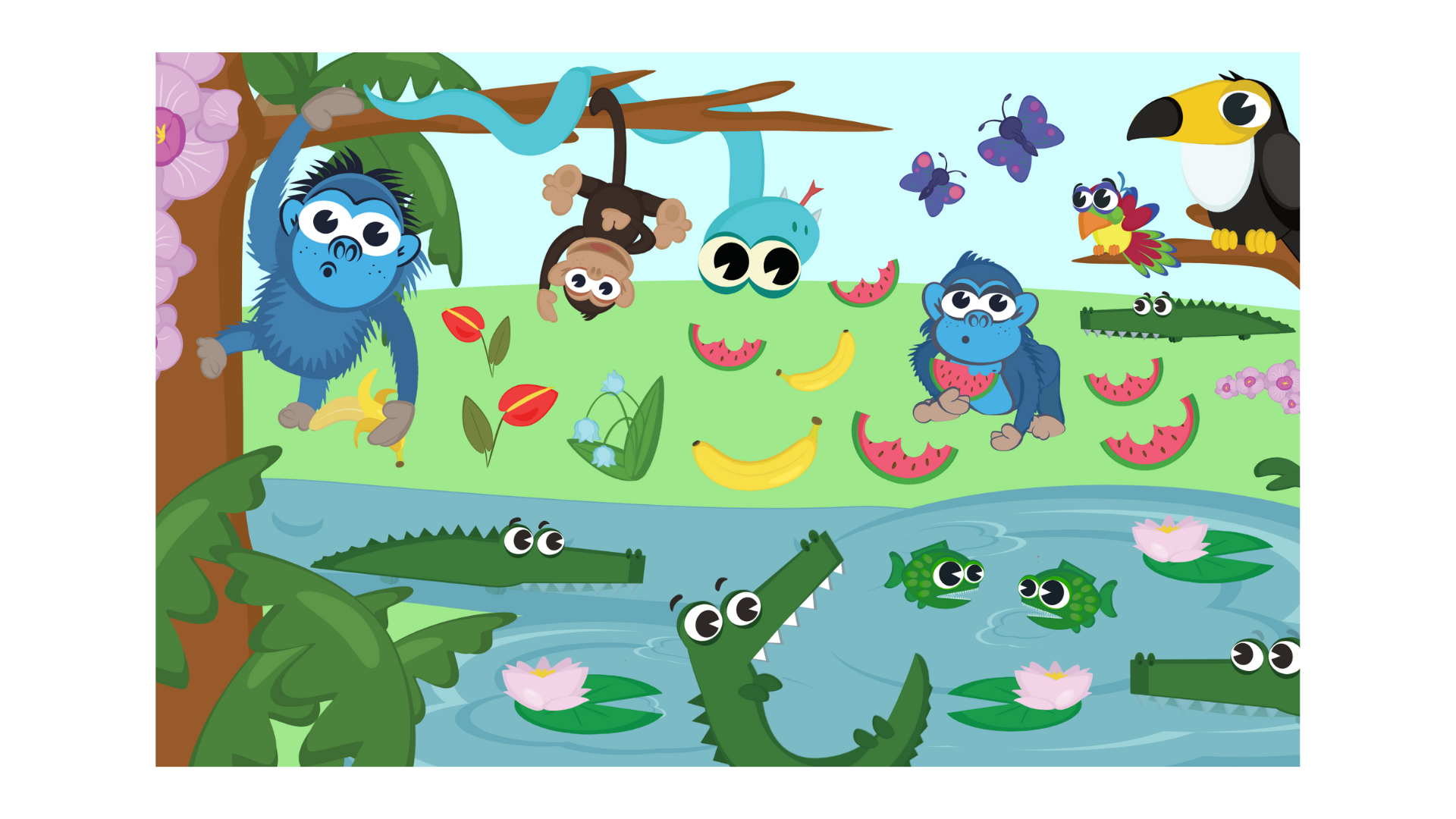Tips on how to use this exercise at home and at school.
Early maths concepts
In this exercise, a pupil focuses on finding objects according to two criteria. This type of task is one of the first communication games that the child understands before they reach preschool age. However, this exercise is more difficult than the previous Exercise 101 because here the child has to have a basic knowledge, for example, what a monkey looks like and also to be able to recognize that it is hanging from a tree.

Why is this exercise important?
The exercise focuses on promoting sorting according to the given criteria. It is important that the criteria are clearly defined and that the objects can also be explicitly classified. The child learns to think, analyse and structure their thoughts. By sorting, the child also learns conceptual precision, which is important in mathematics.
For whom this exercise is suitable?
Mainly for preschoolers, but it is also suitable for older children who need to develop their language skills. The difficulty of the exercise is based on how well the child knows the objects being asked about and their properties. (Example: Can I tell the difference between a cup and other utensils? Do I know that it is on the table? Do I know what a cat looks like and recognize that it is sitting on a tree? Can I find the green toy car among the other toys?)
Methodological recommendations
Either read aloud the instructions, play them from the app or let the child read them by themselves.
Ideally, you should talk to the child and ask the questions "Why do you think this belongs here?", "Can anything else belong here? Like a spoon?", "If not, why?". Thanks to this way of thinking, the child develops language skills through verbal reasoning. It makes learning much deeper and more complex.
Tips for similar activities outside the app
Activities with manipulating everyday objects, where the child has to explicitly identify how they differ from each other, for example in shape, colour, location or type, are a perfect match for this exercise. Use the comparison of two characteristics:
For this exercise, we try to focus on two criteria that can be determined by looking and by the basic information we know about the object. An example might be an instruction where the child is looking for a red fruit and finds an apple (he understands the concept of "fruit" and also correctly distinguishes the colour).
The criterion is therefore the colour, shape or type and other information (type or location). For example, the child is looking for a green vegetable and an owl sitting on a branch, not a green pepper (too easy a criterion) and a night predator (too difficult a criterion).